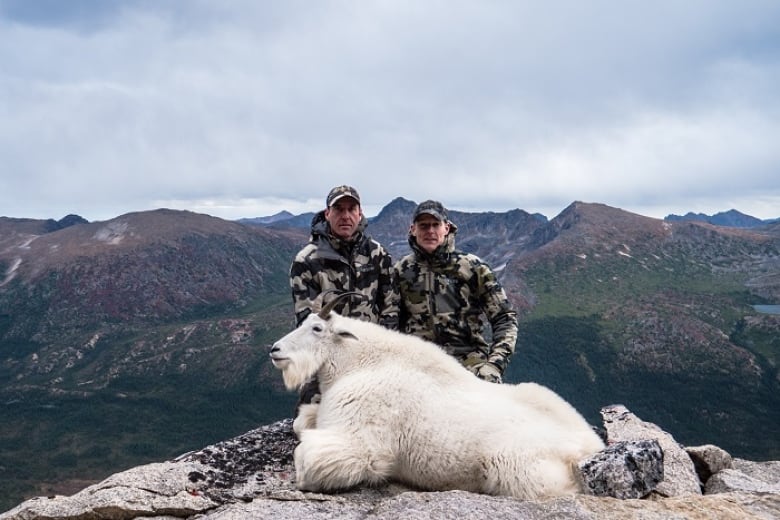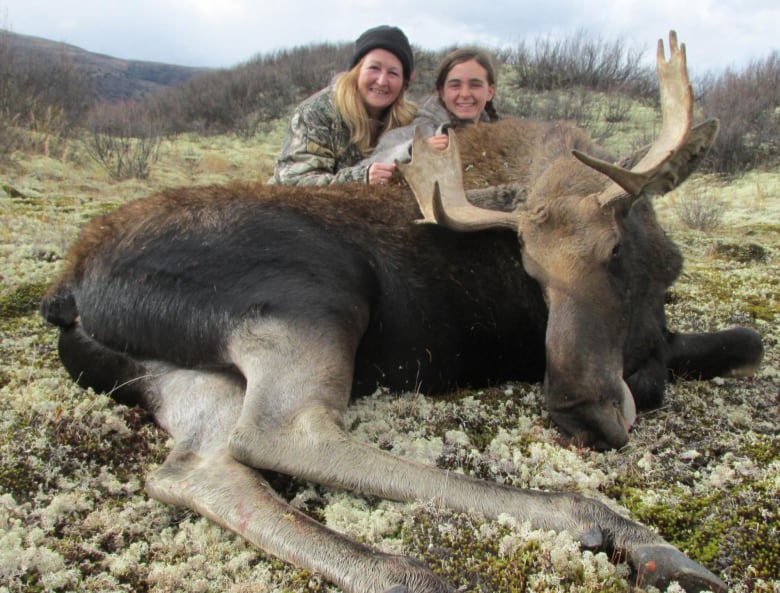Who Uploaded the Photos on Channel 5 the Hunting
On social media, history sometimes repeats itself. Hunter shoots animate being, hunter posts photo, photo sparks public outcry, mail goes viral. And the remainder of the hunting community does a collective facepalm.

On social media, history sometimes repeats itself. Hunter shoots beast, hunter posts photo, photo sparks public outcry, post goes viral. The residuum of the hunting community, meanwhile, does a collective facepalm. The worst thing a hunter tin do is to plough a non-hunter into an anti-hunter by giving them the wrong impression of hunting, writes Mark Hall on his blog, Hunter Conservationist. The "wrong impression" being that all hunters care most is killing and possessing trophies that feed their egos, which of form isn't true, he says. "Hunters are losing command of the hunting narrative, and the way social media is being used is contributing to our demise," says Hall. Speaking past phone, Hall, explains that the challenge with posting a unmarried photo online is that it allows viewers to draw their own conclusions almost the scenario, also as the hunter's motives and graphic symbol. The public likewise tin can't tell from one photo if the meat was used or not. Hall says hunters, and particularly those in the public spotlight, need to realize that what they share will either enhance or injure the reputation of other hunters. He says Tim Brent, the former professional hockey player who posted a picture of a grizzly he shot in the Yukon online, had to have known his mail service was going to "blow upwardly like a volcano," because of the public's divided feelings well-nigh bear hunting (bear is the only animal in the Yukon for which harvesting the meat is not a requirement) and Brent'southward online reach. 'Stopped him in his tracks': Outrage later ex-pro hockey player kills grizzly Brent has tens of thousands of social media followers and was hunting with his father-in-law, Jim Shockey, a TV hunting star. His posts were destined to attain a large audience. Brent'southward hunt was legal, as far equally nosotros know. That's not the problem. The problem is the damage some hunting photos — particularly those featuring a dead beast forepart and eye — can do to the public's perception of hunting. "We [hunters] take an image issue right now, there'due south no hiding that fact," said Adam Janke, editor of Journal of Mountain Hunting. "Like annihilation else on social media, the worst gets the most attention, as opposed to the all-time examples." Janke says it'south important for the hunting customs to sympathize that hunting is misunderstood by the general public and that it's hard for social media to convey all the planning and effort that goes into it. "What goes into putting a deer, a moose, an elk, a whatever in your freezer for nutrient for your family, is incredibly complex. "Social media is a very challenging medium for us to appoint ... with the wider community on. We need to exist very, very careful and intentional about what nosotros post and what are in those posts." Janke doesn't remember hunters accept to stop posting images with the animals they have harvested (these are sometimes referred to as "trophy shots"). Janke suggests, instead, widening the telescopic. "I think we must, must stop showing just those images," he said. "And at that place's a big departure there." Janke and Hall say there is a movement in the hunting community to show the bigger picture of hunting: activities that take place in the days and weeks leading upwards to the moment when an brute is taken. Tell a story, says Hall. Prove people gear preparation and scenery shots. "If you are a non-hunter, y'all're seeing hunting in its larger context and you can potentially have a different appreciation for the individuals in the photos or what really took place." When it comes to taking that final photo of the hunter and the brute, ethical hunters are guided by ane of the chief tenets of hunting: showing respect to the animal. Of course, that tin can mean different things to dissimilar people. For some, it means not taking a photo of the harvested animate being. For others, it means doing information technology in a dignified style. Larry Leigh doesn't mail service hunting photos to social media just, every bit a retired hunter education coordinator for the government of Yukon, he knows how it should be washed. He says hunters should take the time to position the brute in a natural position and wipe away whatever claret. He says the photos or video should be devoid of any "high fives" or whooping. "Information technology'due south an exciting moment but it's as well a moment of reverence considering an animal has just died," Leigh said. "There are as well many macho man photos out there and those are the ones that get united states of america all in trouble." Robby Dick, a 27-yr-one-time hunter in Ross River, Yukon, says he doesn't post that much to social media, but draws inspiration from others who practice. He gives the example of a post he saw from a man who was on a solo hunt in the Northwest Territories. "The mode he talked near his struggles and how he overcame getting his get-go moose after 2 years of hunting... It makes yous happy. When people share stories like that, it'southward groovy." Other people enjoy seeing young people in images, out hunting with their parents. "It shows its a mitt-me-down thing, a traditional thing throughout our history. I call up that that can show a great bargain of respect," said Larry Leigh. He says it's likewise a practiced thought to show how the meat is beingness used. "Making it obvious in a photo or video section that the meat is the precious office of the whole thing." Roxanne Stasyszyn, who speaks for Yukon'southward Section of Environs, says social media is a hot topic in its Hunter Education and Ideals Development courses, which are a requirement for any aspiring hunter in the territory built-in after 1987. She says it'due south understandable for hunters to want to share their experiences and exist proud of their hunting success. But she says they are reminded to consider their audience. "Take into consideration the varying value of the individuals viewing their images." That's something Adam Janke implores of hunters. "Ask yourself: Is what I want to post or about to mail service going to be a net-positive for our entire community, or not?" He says hunters who disregard that adventure hurting the image of all hunters. Sydney van Loon, a Yukon hunter, says she is very conscious almost what she posts to social media and how it will be received. "How can I bear witness that I'm am ethical hunter and that I appreciate the creature and that I value the animal," she considers. Van Loon posts a variety of hunting photos on social media including trophy shots, or "tribute" shots, as she call them. She says she sometimes gets negative reactions from people in her social circle, just they ordinarily have a modify of heart. "When they come up over to my house for a roast dinner ... they go why I do it." 
Hunters facing an 'image consequence'

Too many 'macho-human being' photos


Some photos 'make y'all happy'


Come up over for a roast


Source: https://www.cbc.ca/news/canada/north/hunting-social-media-1.4845949
0 Response to "Who Uploaded the Photos on Channel 5 the Hunting"
Postar um comentário